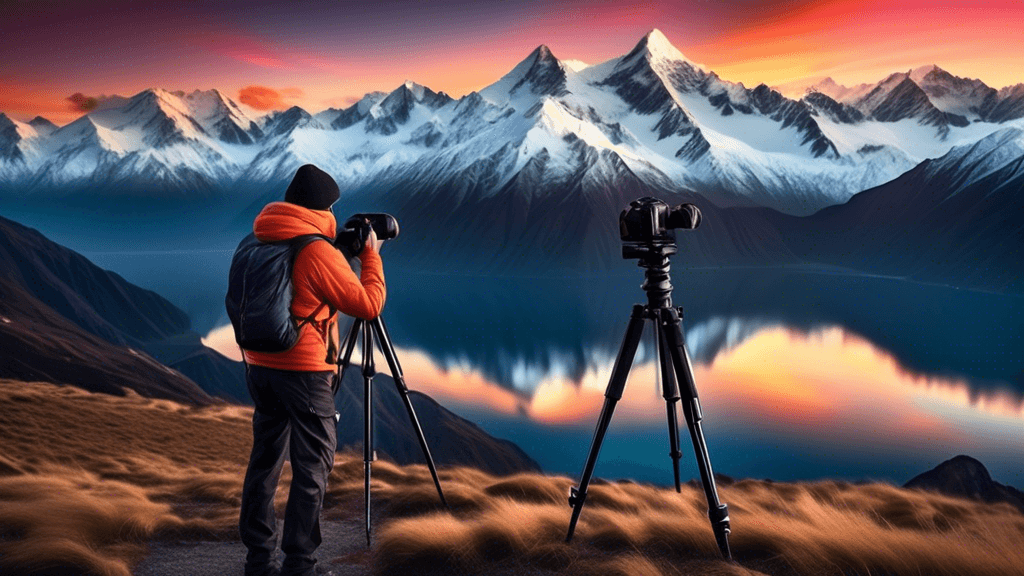
Capturing the Peaks: A Guide to Mountain Photography in New Zealand
Share
The Allure of New Zealand’s Mountainous Landscapes
New Zealand, a haven for photographers, is renowned for its stunning mountain ranges that offer dramatic vistas at every turn. From the misty peaks of the Southern Alps to the volcanic landscapes of the North Island, the country provides endless inspiration for both amateur and professional photographers. But what does it take to truly capture the essence of these breathtaking landscapes?
Understanding the Terrain and Best Times for Photography
New Zealand’s mountains offer varied and often challenging environments that can change dramatically with the seasons. Knowing the best times to visit these areas is crucial for capturing the most captivating images:
- Autumn (March-May): The fall season provides a stunning backdrop with vibrant foliage contrasts against the rugged mountain faces.
- Winter (June-August): For those willing to brave the cold, winter blankets the peaks with snow, offering classic alpine scenes.
- Spring (September-November): As the snow melts, it feeds crystal-clear mountain streams and lakes, ideal for dynamic landscape shots.
- Summer (December-February): While this season can be busier, the longer days allow for extended golden hours, perfect for photography.
Essential Gear for Mountain Photography
Before heading into the mountains, it’s important to pack not only the right photography equipment but also the necessary gear to deal with the terrain and weather conditions:
- Camera and Lenses: A sturdy DSLR or mirrorless camera with various lenses (wide-angle for vast landscapes, a telephoto lens for distant peaks).
- Stable Tripod: Winds can be strong at higher elevations, making a robust tripod essential for sharp, high-quality images.
- Weather-Resistant Bag: Protect your equipment from frequent rain showers and dusty trails with a good quality camera bag.
- Navigation Tools: GPS devices or detailed maps are crucial for safety when exploring remote mountain areas.
Respecting Nature and Local Norms
Photographing in pristine environments comes with the responsibility to leave no trace and to respect local wildlife and habitats. This adherence not only helps in conserving these beautiful landscapes for future generations but also aligns with the values shared by the photography and conservation communities.
Key Tips for Ethical Photography Practices:
- Stay on marked trails to minimize impact on the natural environment.
- Avoid getting too close to wildlife and use a telephoto lens instead.
- Understand and comply with local regulations—some areas may have restrictions on drone usage or require permits for commercial photography.
Preserving the integrity of our natural landscapes is essential, not only for the environment but also for the future of photography, remarks Dr. Emily Green, a conservation expert. When photographers embody respectful practices, they contribute positively towards environmental conservation efforts.
Composing the Perfect Mountain Shot
Mountain photography is as much about skill as it is about perspective and creativity. Here are some composition tips to help you capture the grandeur of New Zealand’s peaks:
- Use the Rule of Thirds: Place points of interest along the lines or intersections to create a balanced, engaging shot.
- Leading Lines: Use natural lines, like rivers or paths, to draw the viewer’s eye into the photograph.
- Play with Light: Experiment with different times of day. The early morning or late afternoon sun can cast dramatic shadows and highlights.
- Focus on Depth: Using a small aperture setting (high f-stop number) will keep both the foreground and background sharply in focus, enhancing the depth of your landscape photography.
Final Thoughts: Why Mountain Photography?
Mountain photography not only challenges your skills as a photographer but also offers a profound connection with nature. The isolated peaks and expansive views are reminders of the earth’s inherent beauty and power. Capturing these moments provides not only personal fulfillment but also a platform to share and promote the preservation of these magnificent landscapes.
So why not pack your gear, embrace the adventure, and create your own stunning interpretations of New Zealand’s majestic mountains? Whether you’re shooting the snow-capped peaks of the Remarkables or the rugged terrains of Tongariro, each photograph you take is a testament to the breathtaking beauty of these wild places.
Are you ready to capture the peaks? Remember, every journey into the mountains is an opportunity to tell a new story through your lens. Embrace it fully and share it with the world!





